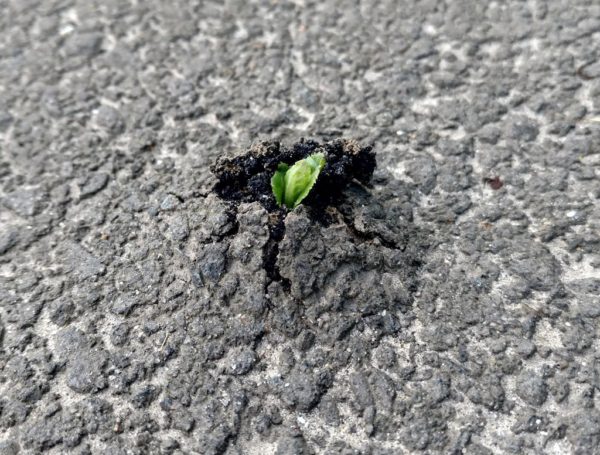Concreting
While the Left bloviates onward about “climate change,” those of us with more experience did something simpler: we observed. We watched the changes over time. We looked for cause and effect in the microcosm, knowing that it would amplify in the macrocosm. And we came to different conclusions.
Mainstream science — people paid to research and for the popularity of the “studies” they produce — has convinced itself that there is too much carbon dioxide and methane in the atmosphere, and that this is altering our climate. Maybe this is somewhat true, but it also hits on the two prongs of the fork of bad logic: its results are not consistent, and better explanations exist.
Watching this city grow and swallow up suburbs and towns, the dominant change visible was replacement of forest and grass with concrete. A new subdivision goes up, and houses and driveways cover half of the ground. Then they install a convenience store and gas station, adding more concrete for parking. Then come the boutiques and coffee shops, liquor stores and hairdressers, fast food and big box stores. Each is surrounded by a wide skirt of concrete.
At that point, people start to fear the wilderness. To them, it means only wild critters that come in through the basement or garage. The safe territory is divided up by roads, covered mostly in concrete, and the remaining “nature” are curated plantings or denatured fragments of forest, with all the undergrowth and ground detritus cleared aside so snakes, rodents and bugs do not proliferate there.
Then, they get rid of the unsightly plants and replace them with ornamental ones. They remove the natural features that animals need, like small creeks and hills, and make the landscape friendly for human eyes with small sloping hills and flat areas for grass. Then they irrigate so that the grass does not die when rain stays away for more than a day or two.
This results in an environment that is mostly concrete, lacking multi-layered forest ecosystems, and where the plants are not the efficient local species that thrive; in fact, what is desired are plants that barely hang on, so they do not need frequent pruning or cleanup. The concrete reflects heat, the asphalt retains it and then emits it at night, and the result is that it is always warmer and stays warm all night long.
Rising heat from the roads and parking lots drives away the small breezes that could gently chip away at the mass of hot air hovering above the human settlement. It seems to deter the smaller rain clouds as well, so the almost daily small rains do not appear. Those both wet the ground and provide water that then evaporates, carrying heat higher above in the atmosphere.
Add to that the smoke — particulates from exhaust and dirt — that hovers in the air, the toxic and mutagenic chemicals emitted by internal combustion and industry, and the gasses emitted by human building materials, and suddenly there is an impenetrable layer of heated insulation hugging the earth.
These are local effects. However, when that locality is magnified many times, the effect takes on what seems like a global effect. It displaces natural air streams, making some areas hotter and some much colder as warm air moves away. It interrupts the natural process of the earth taking on heat and then letting it out at night, which in turn creates greater air flow. Wherever humanity goes, they bring the same practice of concreting, and so the climate is displaced.
In addition, something strange happens with the water supply. Where previously rain soaked into the ground and then evaporated, creating warm currents that engendered breezes and whipped that moisture up into the clouds, now it bounces off the concrete and pools. Storm sewers get some of it, but a huge amount simply goes under the concrete, creating underground erosion that later manifests as subsidence sinkholes:
We also induce sinkholes when we start putting up parking lots and buildings and changing what we call the hydrologic regime. Instead of the water naturally soaking into the ground, it’s now running off and being concentrated—being put into the ground at one point.
This in turn has a negative effect on trees. The earth that they need around their roots is depleted and its life-giving nutrients washed away. Fewer of them thrive, providing less of the shade and strength to the soil that they normally do. Trees also drop small amounts of excess water, cooling the air around them. That lessens also.
Climate change is a narrative. It is a comforting variation on the usual environmentalist idea, which is that we just need to make our gadgets more efficient. What it misses is that no matter how efficient the gadgets are, with too many humans, the climate will change because of how we change the land when we use it. Even developing societies alter it with fields, slash and burn agriculture, houses, roads and harvesting wood. When there are few humans, the impact is light, but when there are too many in any given area, the natural systems that avoid overheating are neutralized.
Conservatives are those who conserve the best of humanity. This requires that they also conserve nature, since humans and nature exist in a symbiotic relationship. When this is out of balance, horrors occur, and fallacies like “climate change” only obscure what we must do: decentralize and reduce our footprint by reducing our numbers.
Tags: climate change, concreting, jet stream, over-concreting, overpopulation










